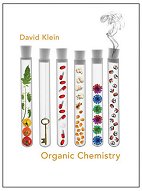“Do living organisms violate the second law of thermodynamics?”
This is one of the questions that David Klein, Johns Hopkins University, USA, uses to introduce his practical and skills-based approach to teaching organic chemistry in his undergraduate-level textbook, Organic Chemistry.
The book is reviewed by Annaliese K. Franz, University of California, Davis, USA, who writes:
When you first approach Organic Chemistry, authored by David Klein, you will immediately be drawn to the artistic and visually appealing nature of the book and its concepts.
Before embarking on the skills and concepts in each colorful chapter, Klein starts by posing a “Did you ever wonder …” question that connects to the topics and applications to be covered. Each chapter then proceeds to integrate numerous commercial and medical applications that focus on pharmacology and medicinal chemistry, entitled “Medically Speaking” and “Practically Speaking”.
Similar to many textbooks, this book is organized into 27 chapters representing a standard and logical flow. The book follows the traditional approach of functional groups, but maintains a strong emphasis on mechanism, with all steps fully illustrated including proton transfer steps. Unique from many textbooks, there are several chapters that independently deal with resonance structures, mechanisms and synthesis strategy, which further emphasize the skill-building approach.
Franz was initially concerned that the textbook may have too much of a focus on applications, and not enough advanced material. However, upon looking for a few of her favorite advanced topics, such as pericyclic reactions and asymmetric catalysis, she found that they were artfully included within the context of other chapters and sections where they could be used to develop the skill-building strategy.
Franz also notes that the consistent incorporation of integrated and challenge problems at the end of each chapter exposes students to more advanced questions focusing on synthesis and mechanism. In this way, an instructor should be able to tailor the use of the textbook for several types of undergraduate chemistry courses.
In summary, she would encourage all chemists to explore this book, whether you are interested to evaluate it as an instructor for an undergraduate course or to personally enjoy the artistic and creative applications presented.
Read the full book review at:
- Organic Chemistry. By David R. Klein,
Annaliese K. Franz,
Angew. Chem. Int. Ed. 2012, 51(43), 10701–10702.
DOI: 10.1002/anie.201206161 
Organic Chemistry, 1st Edition
David R. Klein,
John Wiley & Sons, New York, USA, 2011.
ISBN: 978-0-471-75614-9




